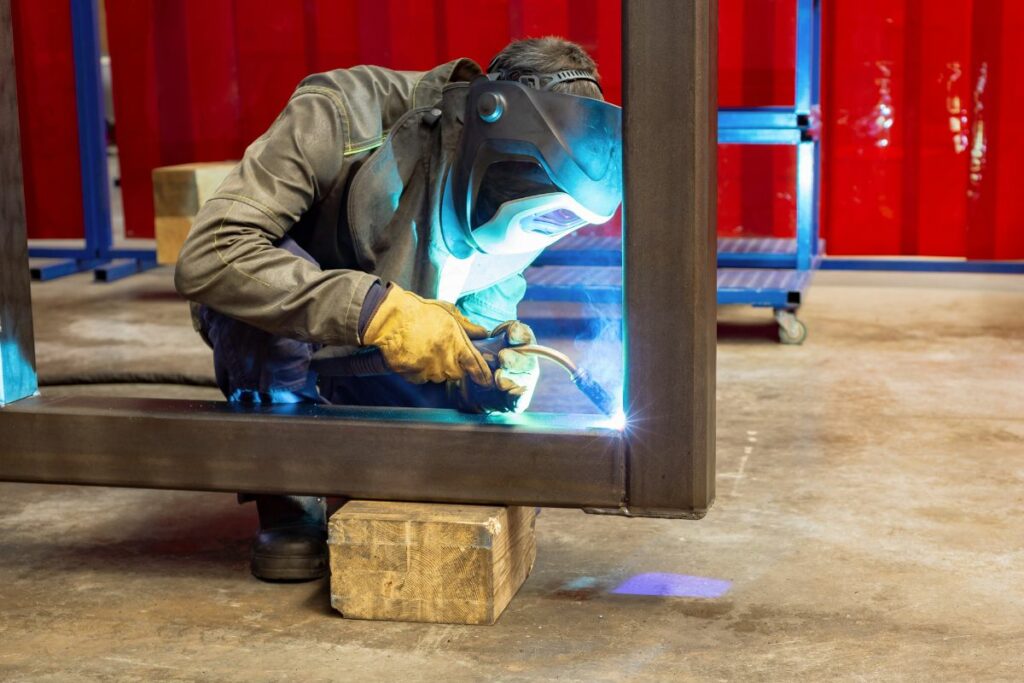
In today’s world, the term “sustainability” has become more important than ever. From reducing carbon footprints to conserving resources, both individuals and industries recognise the urgent need for more sustainable practices. One industry that might not immediately come to mind when thinking about sustainability is welding, but it’s high time we shed light on this essential aspect of modern manufacturing and construction. The good news is that sustainability in welding can indeed be achieved.
Welding is a fundamental process used in various industries, such as construction, aerospace, shipbuilding, and even the fabrication of thrilling theme park rides. While it’s an indispensable technique, welding can be energy-intensive and produce a significant amount of waste if not approached with sustainability in mind. Let’s explore some ways in which sustainability can be integrated into welding practices.
One of the primary concerns in welding is energy consumption. Traditional welding methods, such as arc welding, can be energy-intensive. However, modern advancements have introduced more energy-efficient welding technologies. For instance, using pulsed metal inert gas (MIG) welding or laser welding techniques can significantly reduce energy consumption, making the process more sustainable.
Another critical aspect of sustainability in welding is waste reduction. Welding generates various forms of waste, including metal scraps and hazardous fumes. By implementing efficient materials management and recycling programs, welding workshops can reduce their waste output. Additionally, using precision welding techniques can minimise the amount of excess material required for the process.
Welding produces fumes and gases that can be harmful to both the environment and the health of welders. Employing cleaner welding processes, such as gas metal arc welding (GMAW) with proper ventilation and exhaust systems, can help mitigate the release of harmful emissions.
Sustainable welding extends to the materials used as well. Employing recycled metals and alloys in welding projects can reduce the environmental impact associated with mining and smelting. Moreover, scrap materials generated from welding processes can often be recycled, reducing the demand for virgin materials.
Sustainability in welding also involves educating and training welders on best practices. Welding professionals should be aware of the environmental impact of their work and equipped with the knowledge and skills to minimise that impact. This includes using the right welding techniques, selecting appropriate materials, and adhering to safety and environmental regulations.
Outdated welding equipment can be less efficient and more polluting. Upgrading to modern welding machines that are designed with sustainability in mind can result in better energy efficiency and reduced emissions. Investing in high-quality equipment may require an initial upfront cost, but it often pays off in the long run through improved sustainability and productivity.
In some cases, choosing alternative materials or alloys for welding projects can contribute to sustainability. For example, using lightweight materials like aluminum instead of steel can reduce energy consumption during welding and the overall weight of the finished product, leading to fuel savings in transportation.
Collaborative efforts between welding professionals, manufacturers, and environmental organisations can lead to the development of sustainability certifications for welding practices and products. These certifications can serve as guidelines for achieving and maintaining sustainable welding processes.
Sustainability in welding is not only possible but also necessary in today’s world. As we face increasing environmental challenges, every industry must play its part in reducing its ecological footprint. Welding, being a pivotal component of various sectors, is no exception.
By adopting energy-efficient techniques, reducing waste, using cleaner processes, and promoting education and awareness, the welding industry can significantly enhance its sustainability. The benefits go beyond environmental concerns, as sustainable welding practices can also result in cost savings, improved workplace safety, and a better reputation.